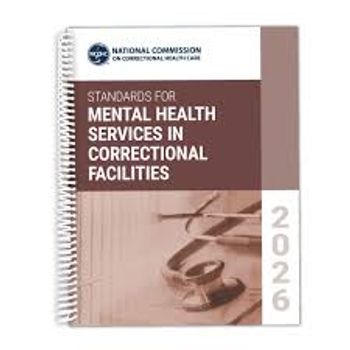
- Psychiatric Times Vol 36, Issue 3
- Volume 36
- Issue 3
A Malpractice Marathon
A courageous piece that tells the story about a lawsuit that dragged on for nearly two decades after the sudden and unexpected death of this psychiatrist's patient.
I had been on the staff of our small community hospital for 15 years and was tired. Staff membership meant being on call every few days, which entailed being responsible for all emergency department (ED) admissions and all consultation requests for a 24-hour period. It also meant numerous department and hospital staff meetings and serving on committees. If I had been a surgeon and needed the facilities it might have been acceptable, but it was a high price to pay for admitting only two or three of my established patients per year. I had considered resigning for several years but had a contractual agreement with an HMO.
On the afternoon of June 1, “Mr S” was brought to the ED. A divorced man in his forties previously unknown to me, he had had earlier admissions, including at least one to the state hospital. Unfortunately, he had never pursued the necessary interim treatment. Aware that he was becoming ill, he went to his sister’s house where his behavior became erratic and violent, ending in his breaking a window. He was taken to the hospital by ambulance.
In the ED, he was combative, requiring physical restraint and repeated injections of haloperidol. After he was admitted to the psychiatric ward, I was called as the attending physician.
He was quite sedated and unable to converse coherently when I saw him the next day. Laboratory results taken on admission showed a high creatine kinase (CK) level but were otherwise unremarkable. He also intermittently exhibited muscular stiffness and mutism. His physical examination revealed a loud, strange sound in his chest that I could not identify, and I requested an internal medicine consultation.
Mr S was transferred to a medical ward. After a neurology consultation the next day, he was returned to psychiatry on the assumption that he was experiencing extrapyramidal symptoms. The consultant also mentioned that the clinical picture was “somewhat suggestive of neuroleptic malignant syndrome” (NMS). A then-recent journal had devoted an entire issue to NMS with a cover drawing of a patient in flames, encased in wood. Certainly dramatic but nothing like Mr S, who didn’t have severe muscle rigidity or a temperature higher than 101.
The high CK level was not fully explained, but he had struggled against the restraints in the ED and had received several intramuscular injections, which could account for this. He had also cut his hand while breaking the window. Blood levels were measured daily and fell to a normal range over several days. Medications were initially withheld to allow him to be more engaging and able to respond during the interview.
My partner was taking over next month, and I would be leaving. This looked like my last big case, and I was determined to do this properly, without the usual time pressures. I obtained as many medical records as possible, interviewed family members, and spent time every day-sometimes twice daily-speaking with Mr S as he became less sedated from the medication administered in the ED. With the information obtained, his diagnosis appeared to be psychotic mania.
Unfortunately, without antipsychotic medication, Mr S became increasingly delusional, fearful, and uncooperative. A series of medications was tried over the initial 2 weeks but were either poorly tolerated or ineffective. On the third hospital day, he expressed the belief that he was possessed by the devil and was being visited by his dead grandfather. On day 4 he said he felt fine and wanted to go home but then wondered aloud if he was alive. On day 8 he loudly announced that he was the “Second Coming” and made numerous calls to the police on the patient phone. He sequestered himself in the bathroom and had to be physically extracted when he refused to come out.
Hearing airplanes in the glide path to the airport near the hospital, he thought the sound heralded the end of the world. He was found alone in his room at one point with his arms outstretched against the wall in the form of a cross, whispering, “Jesus.” At 2 am on the 9th day, the patient was in the shower screaming, “F** the devil,” refused to come out, and was physically removed and placed in a seclusion room.
After 2 difficult weeks, Mr S began to improve with chlorpromazine without significant adverse effects. When seen on the 15th day, he was calmer, less suspicious, and more accessible. On the 16th day, as I sat at my office desk doing administrative work, I received a phone call from the ward reporting that Mr S had been found dead in his bed an hour after he was last checked. My initial reaction was disbelief and shock, and I thought they were speaking about another patient or to the wrong doctor.
His sister, the head of the family, was the office manager of a surgical colleague. As soon as the office opened, I went to inform her, not wanting some impersonal clerk to deliver the news. I later met with Mr S’s brothers, but it was difficult to explain that I had no idea why he had died-this, they could not accept.
Life went back to normal and I left the hospital, as planned, shortly thereafter. Eighteen months later, a lawsuit was filed. I learned of it on the radio driving home from work and was soon contacted by the newspaper for which I had no comment. The contention was that the death had been caused by NMS. This made no sense as patients with NMS do not die quietly in their sleep; they die in extremis in the ICU. I was assigned an attorney by my insurance carrier, and we went to work.
The next step was the medical claim conciliation panel, a procedure designed to discourage spurious malpractice suits consisting of an attorney and two physicians in a kind of casual trial-like atmosphere to determine if there was merit to the suit. Their conclusion was that there was not-but this was advisory only, not binding on either side and could not be mentioned in subsequent proceedings.
This did not deter the plaintiff and a trial date was set. The plaintiff’s attorney was a young, “cocky” personal injury lawyer who was eager for his first big win in what he would term at trial, “a death case.” Then came interrogatories, written questions from the plaintiff’s attorney requesting answers to a wide variety of questions and very time consuming, one of which was to list every book in my professional library, which covered an entire wall of my office. Fortunately, my lawyer replied that we would not respond to that.
It was then time for my deposition, based partly on earlier interrogatories. The plaintiff’s attorney was eager, inexperienced, and animated, and the deposition was, at best, disorganized and took the better part of the day. There seemed to be no clear structure or goal, just a series of random questions, many of which demonstrated a lack of knowledge on the subject. I was exhausted.
Four years later, the trial was held. Malpractice cases are not easy to win and depend heavily on expert testimony. Physicians are at something of an advantage in that they know who the real experts are, even if they are not full-time forensic practitioners, while inexperienced plaintiff’s attorneys do not. It could not have been truer in my case. I was able to find and hire an academic psychiatrist engaged in NMS research who had written the only book on the subject. His opinion was that Mr S indeed had early NMS but that it had quickly dissipated and it certainly had not caused his death. NMS typically leaves no identifying evidence at autopsy. As in any field, experienced experts can identify early, partial signs of problems undetected by the inexperienced and, given the moment in history, I doubt one in a hundred competent psychiatrists would have been able to make the diagnosis at the time.
The trial took just over 3 weeks, punctuated by the judge’s need to take a week off for personal matters. Late in the trial, we were required to attend a settlement conference with a very pleasant, retired judge but without the plaintiffs, who had generously offered to accept the $2 million limits of my malpractice insurance. The judge urged us to do so. We declined.
Deliberation took several days, marked by numerous additional questions by the jurors before a decision in my favor. I bought my attorneys some expensive wine and went home. Life returned to normal.
Unbeknownst to me, the plaintiffs were dissatisfied with the verdict and had appealed the case. Thirteen items were submitted, one was upheld, “failure to provide informed consent.” Instructions as to how to do this with a disorganized, delusional person were not included.
A new deposition was based largely on the extensive list of interrogatories I had answered 13 years earlier but had not reviewed since. Running through the list, the plaintiff’s attorney had certainly climbed the learning curve, but there seemed to be nothing new until the question of how informed consent had been determined. Thirteen years ago, I had answered the question: “Absent refusal, consent is assumed.” It literally took my breath away, and I had to call for a recess.
Seven years to the month after the first, the second trial began. I had a new lawyer because the first lawyer had retired; and they had a new expert. The nature of the complaint at issue meant that the entire case would need to be re-tried. The new expert was an academic forensic psychiatrist who had never seen a case of NMS but whose expertise lay in the area of informed consent.
This trial, also lasted just over 3 weeks, but the jury took less than an hour to decide in my favor. Later, several jurors reported that they would have announced the verdict sooner but had not wanted to appear cavalier. On this occasion there was a nice, relaxed dinner with my wife and attorneys. There would be no further appeals.
SHARE YOUR STORY
Continue reading to learn more about
Disclosures:
Dr Betwee is a retired psychiatrist.
Articles in this issue
over 5 years ago
An Invitation: Psychiatric Malpractice Grand Roundsover 6 years ago
THE QUIZ: Chronic Pain and Traumatic Brain Injuriesover 6 years ago
Climate Disruption and the Psychiatric Patientover 6 years ago
Looking at the Past and Forward to the Futureover 6 years ago
The Movie on Your Patient’s Mindover 6 years ago
The Complexities Behind the Act of SuicideNewsletter
Receive trusted psychiatric news, expert analysis, and clinical insights — subscribe today to support your practice and your patients.














